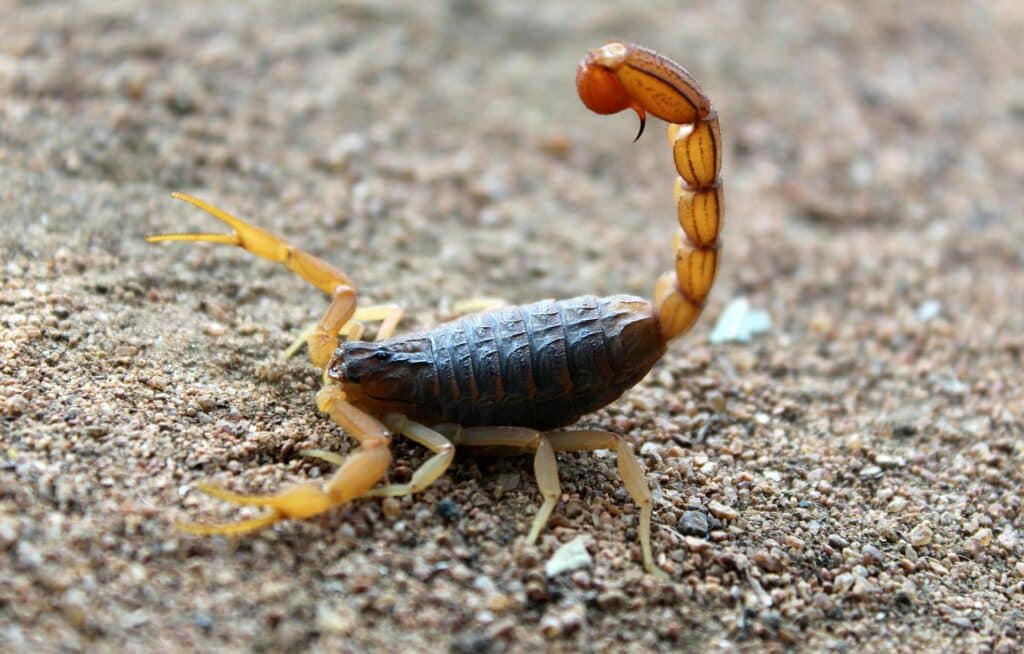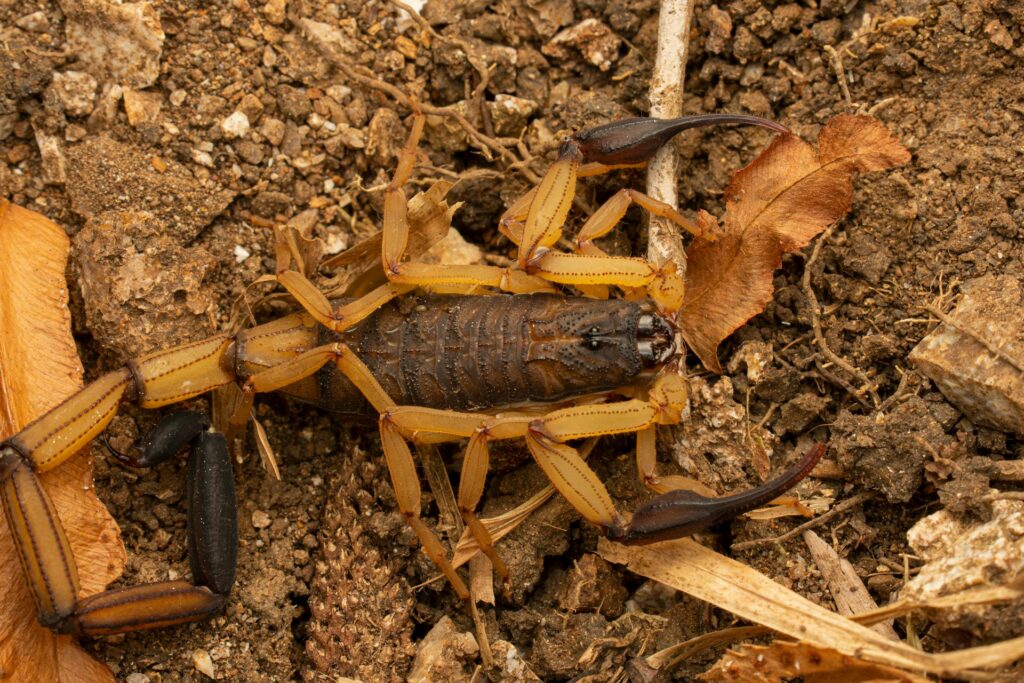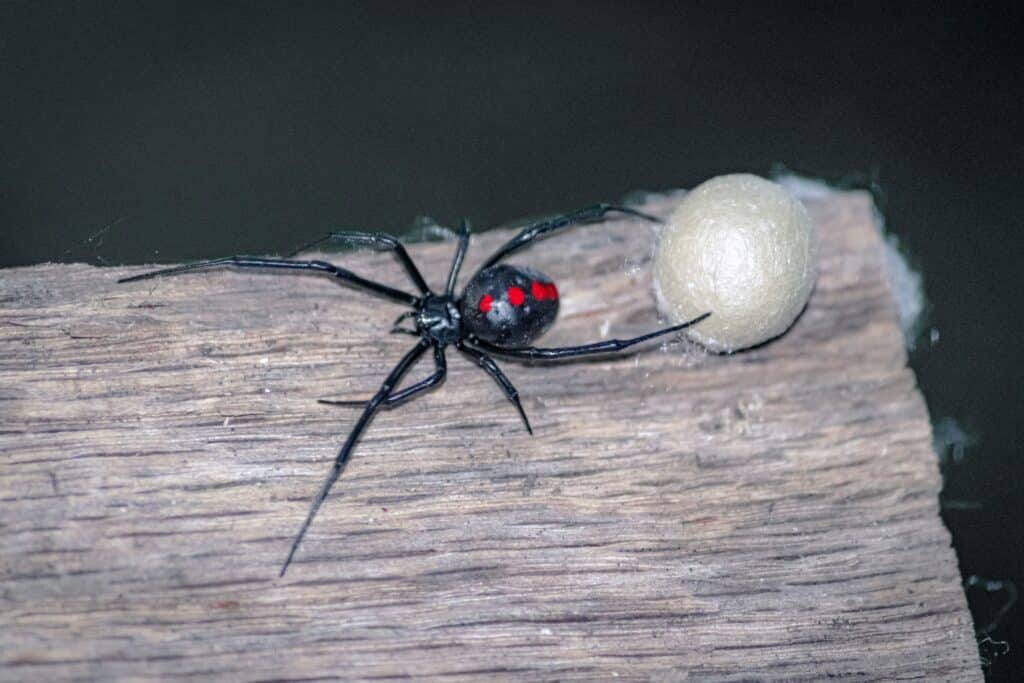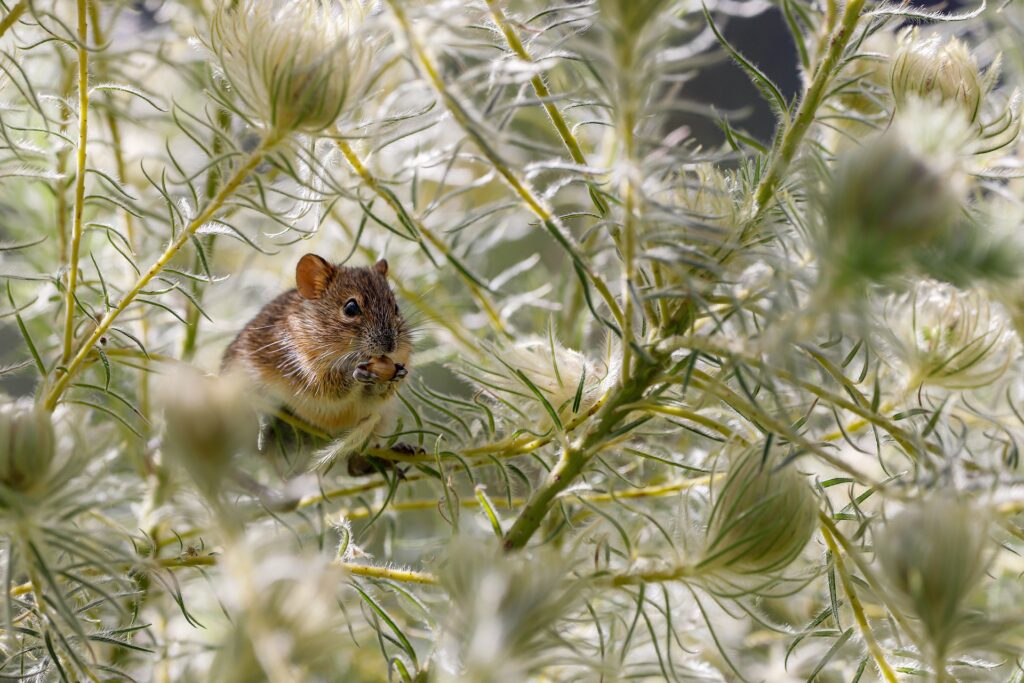What do spiders, scorpions, and mites have in common? They belong to a larger group of animals called arachnids. While you’ve most likely seen a spider or two around your home, these fascinating creatures are incredibly diverse. Let’s investigate what makes them unique, the types of places they live, and whether they pose a danger to humans.
Defining Arachnids

Arachnids are a class of arthropods. Arthropods are invertebrates with the following features:
- Exoskeletons
- Segmented bodies
- Jointed appendages
Spiders, ticks, scorpions, and mites all belong to this class of creature.
Arachnids are unique because their bodies are separated into two main sections: the cephalothorax and the abdomen. The cephalothorax is the front part of the body. There, you’ll find their eyes, mouths, and legs. Speaking of legs, arachnids always have eight. Insects, in contrast, always have six.
Most arachnids are predatory. They inject digestive fluids into their prey. Then, they draw the liquefied remains into their mouths.
Arachnids are also usually terrestrial. This means their preferred habitat is on land. In some cases, you’ll find mites living in or around water.
Fun fact: The word “arachnid” comes from the Greek myth of Arachne. According to the story, Arachne was a talented weaver who was transformed into a spider.
Are Spiders the Only Arachnids?
No! Many more species belong to the arachnid family, though spiders are the only ones that spin silk and make webs. In fact, there are about 100,000 different types of arachnids across the planet.
Fun fact: Arachnophobia actually describes a fear of arachnids—not just spiders.
What are some of the other arachnids? You’ve got scorpions with pedipalps that act as pincers. There are harvestmen, also known as daddy longlegs. These are not actually spiders because they break a fundamental rule of spider classification—they only have one set of eyes.
Other creepy crawlies that fall under the arachnid umbrella include ticks and mites.
Are Arachnids Insects?
Great question. In short, no, they’re not. But it can be a little confusing. Arachnids and insects are both arthropods. But insects are not arachnids, and arachnids are not insects. Let’s break it down:
- Insects have compound eyes. Arachnids have simple eyes.
- Insects have three body segments: the head, the thorax, and the abdomen. Arachnids usually only have two.
- As we mentioned, insects have six legs. When fully grown, arachnids have eight.
- Insects have antennae and wings. Arachnids don’t.
Fun fact: Some juvenile arachnids have six legs. They grow their final two legs as they reach maturity.
Key Features of Arachnids

Arachnids have segmented bodies, tough exoskeletons, and jointed appendages. Their bodies are divided into the cephalothorax and the abdomen.
The cephalothorax has six pairs of appendages. The first pair are the chelicerae, which are in front of the mouth. They are often pincer-like and used to hold and crush prey. In spiders, chelicerae contain venom sacs. The second segment deposits venom through the fangs.
The second pair of appendages, called pedipalps, function as organs of touch. They are long and leg-like in spiders and daddy longlegs and large pincers in scorpions.
The remaining four pairs of appendages are usually walking legs. Exceptions include the tailless whip scorpion, whose first pair are tactile organs. In some mites, there are only two or three pairs of legs.
Despite sharing common features, arachnids vary a lot in appearance.
You’ve got short-legged, round-bodied mites, pincer-equipped scorpions with curled tails, delicate long-legged spiders, and robust hairy tarantulas.
The Lifecycle of Arachnids

Arachnid Mating
In most arachnids, males don’t transfer sperm directly to females. Instead, they engage in courtship rituals. These encourage the female to accept a gelatinous sperm capsule called a spermatophore.
During mating, the sperm is transferred to a sac within the female’s reproductive system, known as the spermatheca. Eggs are then fertilized as they are laid.
Mating behavior in mites varies. Sperm is usually produced in a spermatophore and transferred to the female either by the chelicerae or, in some species, by the third pair of legs.
Egg Laying
Many spiders lay their eggs in soil or a protected site and generally leave them alone. However, some tropical species guard their eggs as they develop and grow. Others place their eggs in protective cocoons.
Scorpions have quite a different reproductive strategy. Fertilized eggs develop inside the mother, and the young are born alive. After they’re born, young scorpions ride on the mother’s back until the first molt.
Arachnid Growth and Molting
Arachnids grow through a process called molting or ecdysis. They shed their exoskeleton to produce a new, larger one. Many arachnids molt for the first time while still in the egg. Newly hatched arachnids are small, with a softer exoskeleton compared to adults.
The number of molts needed to reach full maturity depends on the species. More oversized arachnids can molt up to 10 times. Before they start the process, arachnids look for a safe and protected site.
Fun fact: Spiders, false scorpions, and some mites produce cocoons to safeguard themselves during this vulnerable process.
Lifespan of Arachnids
In temperate regions, arachnids have short lifespans, often just one season. In warmer areas, some arachnids live for more than a year.
Fun fact: Some tarantulas can live for up to 30 years in the wild!
Habitats of Arachnids

Arachnids can live almost anywhere across the globe. They are incredibly adaptable and have learned to thrive in extreme environments. Let’s take a closer look.
Terrestrial Arachnids
Most arachnids are terrestrial—they live on land rather than in water. You’ll find them in forests, deserts, grasslands, and even city or suburban areas like your home. These places offer plenty of places to hide and hunt.
Smaller arachnids often live in soil litter, such as twigs and leaves. They need the moisture offered by these environments to prevent their bodies from drying out.
Some arachnids burrow or build their homes in caves. These locations are ideal because they offer a stable temperature and plenty of moisture.
Fun fact: Cave-dwellers have unique adaptations like extra-long extremities, light colors, and no eyes.
Aquatic and Semi-Aquatic Arachnids
Although most arachnids are land dwellers, some have adapted to life in or near water.
Certain spiders can walk on the water’s surface to hunt and catch their prey, diving underwater to escape potential threats. Some mite species are fully aquatic, meaning they live their entire lives in bodies of water, like ponds and streams.
Parasitic Arachnids
Some ticks and mites are parasitic, which means they live on or inside of other animals. Ticks, for example, attach to mammals, reptiles, and birds to feed on their blood. You’ll typically find these creatures in grassy areas where they can latch onto animals as they pass by.
Deserts
Although they have exoskeletons, arachnids are prone to drying out. For this reason, it’s pretty surprising so many have made the desert their home.
Over time, they have evolved to survive harsh, hot conditions. Many desert-dwelling arachnids are nocturnal, which means they’re most active at night. This helps them stay out of the intense heat of the day. Others use extensive burrow systems to avoid the sunshine and conserve moisture.
Are Arachnids Dangerous?

Arachnids are interesting and intriguing, but they are also a little intimidating. It’s no wonder an estimated 3 to 15% of the population has arachnophobia.
The good news? Most of the arachnids you might encounter day-to-day are not dangerous. Here’s what you need to know.
Spiders
Most spiders are harmless to humans. Out of 45,000-plus species of spiders, only a few have venom that is harmful to people. These include the black widow and the brown recluse. While their bites can be severe, they’re rarely fatal with medical treatment.
Fun fact: Most spiders’ venom subdues their prey, which is typically tiny insects. This means it doesn’t do much—if anything—to humans.
Scorpions
Scorpions have a bad reputation, but most species are not dangerous to humans. There are about 1,500 species of scorpions, but only about 50 have venom that is strong enough to cause health issues in humans.
Ticks and Mites
Ticks can be dangerous because they are carriers of diseases such as Lyme disease and Rocky Mountain spotted fever (RMSF). Mites can cause irritation and allergic reactions.
Need Pest Control Near You?

Not all arachnids are dangerous, but that doesn’t mean you want them crawling around your home. If you are worried about spiders, scorpions, and other creatures taking up residence on your property, it’s time to call in a professional pest control expert.
At Aptive, we understand just how important it is for you and your family to feel protected and comfortable. We use professional pest control methods to rid your home of existing pests and prevent future infestations. So, contact our friendly team today, and let’s get rid of those pesky arachnids for good.









